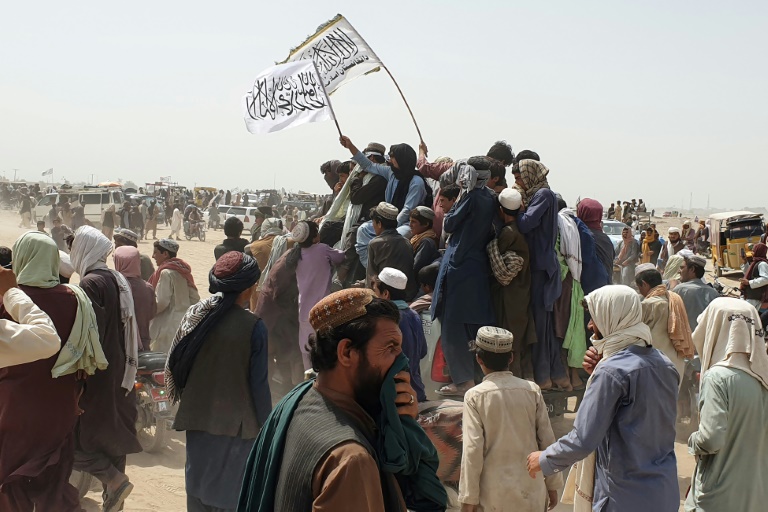The Taliban have entered Afghanistan’s capital Kabul and taken over the presidential palace, capping a sweeping military campaign as US-led foreign forces pull out of the country.
Here is a look at the lightning offensive that began in May:
– Fierce fighting –
In early May, NATO begins a final withdrawal of its mission in Afghanistan involving 9,600 soldiers — 2,500 of them American.
Intense fighting soon breaks out between the Taliban and government forces in the southern province of Helmand.
A bomb blast outside a girls’ school on May 8 in Kabul kills 85, mostly pupils.
The deadliest attack in a year is blamed on the Taliban, though they do not claim it.
– Taliban advance –
US forces withdraw from one of Afghanistan’s largest air bases in Kandahar, the country’s second-biggest city, in mid-May.
The insurgents then seize districts in Wardak province near Kabul, and in the key province of Ghazni, which straddles roads connecting the capital to Kandahar.
By mid-June they have captured several districts in northern provinces, forcing military retreats.
The Taliban take control of the main Shir Khan Bandar border crossing with Tajikistan on June 22, prompting the Central Asian country to check the combat readiness of its armed forces.
– US leaves Bagram –
Officials on July 2 announce the departure of all American and NATO troops from Bagram, Afghanistan’s biggest air base, which served as the linchpin of US-led operations in the country for two decades.
Two days later, the Taliban seize the key district of Panjwai in Kandahar, the insurgents’ birthplace and former bastion.
The Taliban announce the capture of Islam Qala, Afghanistan’s biggest border crossing with Iran, on July 9.
On July 14, the insurgents take control of the Spin Boldak border crossing with Pakistan, a major trade route between the two countries.
– Urban onslaught –
The Taliban offensive escalates sharply with a new focus on urban centres as the insurgents attack the cities of Lashkar Gah, Kandahar and Herat.
The United States and Britain say the Taliban may have committed war crimes, accusing the insurgents of “massacring civilians” in the town of Spin Boldak.
Eight people are killed on August 3 in a coordinated Taliban-claimed bomb and gun attack targeting the Afghan defence minister and several lawmakers in Kabul.
The Taliban shoot dead the head of the Afghan government’s media information centre at a mosque in the capital on August 6.
– Provincial capitals fall –
The Taliban capture their first Afghan provincial capital, the city of Zaranj in southwestern Nimroz, “without a fight”.
In the following days, several other northern cities fall: Sheberghan, Kunduz, Sar-e-Pul, Taloqan, Aibak, Farah and Pul-e-Khumri.
Despite the bloodshed and sweeping advances, US President Joe Biden gives no suggestion he will delay the troop withdrawal, which is to be completed by August 31, ahead of the 20th anniversary of the 9/11 attacks.
Afghan President Ashraf Ghani flies to the besieged northern city of Mazar-i-Sharif on August 11 to rally his forces.
But his visit is overshadowed by the surrender of hundreds of Afghan soldiers in nearby Kunduz and the overnight capture of a ninth provincial capital, Faizabad.
– Fall of Kabul –
The Taliban capture Ghazni, 150 kilometres (90 miles) southwest of Kabul, on August 12.
Herat falls in the west the same day, and a day later the Taliban capture Kandahar and Lashkar Gah in the south.
The cities of Asadabad and Gardez follow on Saturday with Mazar-i-Sharif, which Ghani had visited just three days earlier.
Jalalabad is taken over by the insurgents early on Sunday, leaving Kabul the only remaining major Afghan city still under government control.
Ghani flees the country, reportedly to Tajikistan, and the Taliban enter the capital, eventually taking position in the presidential palace. In a statement, Ghani admits the insurgents have “won”.
burs/jj/gle/qan/sst/st









